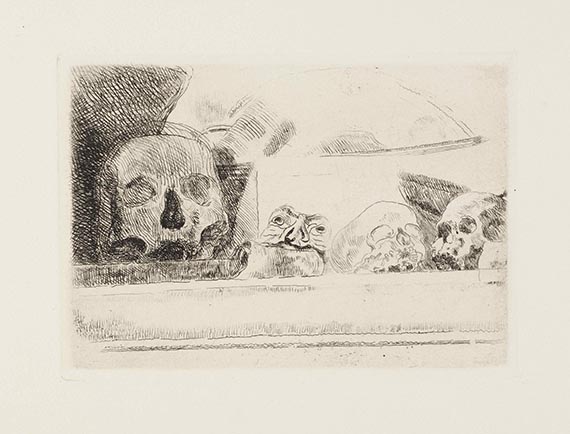
Andrea Boscoli
Rom
1608
Born ca 1560 in Florence, Andrea Boscoli was, like Gregorio Pagani and Agostino Ciampelli, a pupil of Santi di Tito. In 1583 Andrea Boscoli enrolled at the Florentine Accademia del Disegno. Boscoli's training there in the 1580s and 1590s was under the sway of the "reform" carried out by his teacher, which was based on consistent training in drawing from nature.
Andrea Boscoli himself developed a style distinguished by the acute attention he paid to form in the aesthetic sense, assimilating as it did the liveliness of representation and the cosmopolitan mindset of Federico Zuccari, the rediscovery of early Tuscan Cinquecento artists, printmaking north of the Alps and a general interest in artistic developments outside Florence.
Drawings after Titian document Andrea Boscoli's trip to Venice in 1587; that same year he visited Rome, where he drew from ancient statues and reliefs and after Raphael's loggias. It was probably in Rome that Andrea Boscoli became acquainted with the profane interiors of Jacopo Zucchi, met Zuccari and came into contact with artists from countries north of the Alps.
At that time Boscoli executed frescoes for the Chapel della Cella of Giovanni Angelo Montorsoli at the Servite (Servants of Blessed Mary) convent, where a clear vibrant palette and simplicity in the narration of religious scenes reveal the influence of Santi di Tito, Zuccari and Federico Barrocci.
Andrea Boscoli's talent for profane scenes is shown in the mythological frescoes of the Villa della Seta in Corliano, Pisa (ca 1592) and in this he differs from his Florentine contemporaries. In numerous works executed in the 1590s, Boscoli concentrated on creating lively effects with light and shade in a variety of interiors.
In 1597 Boscoli did a series of Passion drawings, from which Pieter de Jode made engravings that were published in Siena by Matteo Florimi. Further, Andrea Boscoli painted some large altarpieces in Florence as well as small devotional scenes and profane works on private commission.
The year 1600 ushered in a new phase of activity for Boscoli: he painted frescoes and large altarpieces in the Marche (the Marches). The work Boscoli did in 1601-03 shows a revival of Mannerist form elements: elongated proportions and expressive pathos in figures as well as compositions often built up on diagonals.
Late in 1605 Boscoli briefly returned to Florence. In 1606 he was in Rome. Andrea Boscoli - described by his biographers as a fantastic, bizarre character, albeit a bon vivant, aficionado of astrology, music and poetry, who remained in close contact with the painters and sculptors of his day - can be said to have exerted a profound influence on the generation of artists who succeeded him.
Would you like to sell a work by Andrea Boscoli?
Infos for seller





